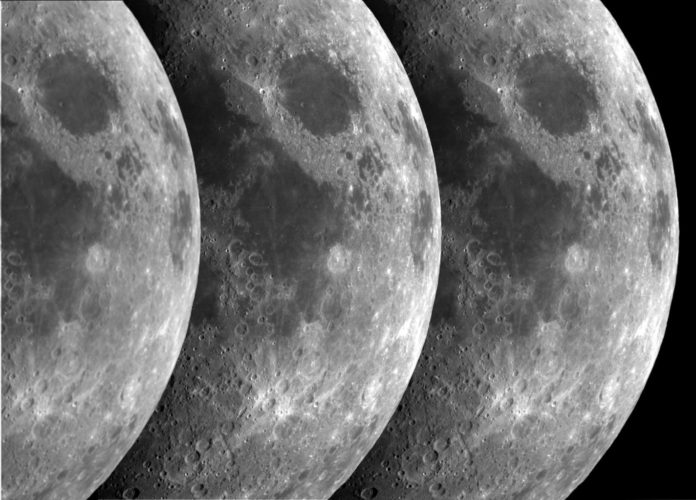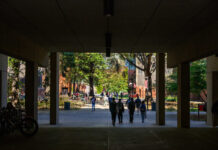
On July 20, 1969, NASA’s Apollo 11 spacecraft landed on the moon – the first successful lunar touchdown in history. Led by Americans Neil Armstrong, Buzz Aldrin and Michael Collins, the feat was shown live on TV to a worldwide audience, culminating with Armstrong’s first steps on the moon’s surface. In that moment, he declared the accomplishment was “one small step for man, one giant leap for mankind.”
Apollo 11’s mission 50 years ago remains a defining moment in human history and kick started a robust pipeline of space exploration well beyond the moon. Many UofL Cardinals have been on the front lines of that exploration.
Louisville is just over 600 miles from NASA’s headquarters in Washington, DC, and 900 miles from Cape Canaveral, Florida, but the university is closely tied to numerous space-based research projects nonetheless. It of course helps that we have a Department of Physics and Astronomy filled with ambitious researchers like Benne Holwerda, who recently won time with the famous Hubble Space Telescope for research – a coveted award for those chasing the biggest questions posed by the universe.
Holwerda is using this opportunity to dive into three research projects that study the role of dust in the energy of two small galaxies.
His work is simply the tip of the iceberg of UofL’s space research. There’s also the work of Dr. Timothy Dowling, director of the atmospheric science program. Dowling, the only planetary scientist in Kentucky, has researched the length of a day on Saturn – a question that has stumped scientists for hundreds of years. Using data from NASA’s Cassini spacecraft to measure waves in the atmosphere, Dowling and his team came up with 10 hours and 34 minutes. Another group of NASA researchers recently confirmed the accuracy of that timeframe.
“To have that confirmed is icing on the cake,” Dowling told WDRB earlier this year.
Dowling has also served as a researcher for the NASA Voyager II mission that photographed and mapped the surface of Uranus, and is the lead architect for the Explicit Planetary Isentropic Coordinate (EPIC) atmospheric model used by NASA and researchers around the world to model the weather on Jupiter, Saturn, Uranus and Neptune.
Currently, he is currently working on a new project involving Mars. As part of this research, Dowling received $2 million in (non-UofL-related) grants over 30 years to study planetary atmospheric dynamics. His latest research explores cubesats to monitor weather and forecasting on Mars to support the future boots-on-the-ground astronauts to the planet.
“The field of operational forecasting for Mars is just emerging, and will grow as we get closer to putting astronauts on the surface. This is all just in the early planning stages,” Dowling said.
Speaking of the forecast, Dowling’s colleague, UofL assistant professor of physics Jian Du-Caines, is working with Clemson atmospheric physics professor Jens Oberheide on a NASA-funded project to better predict the weather in space. The research is important, according to Du-Caines, to more clearly predict when storms or bad weather above the earth’s atmosphere might impact GPS, power grids, suborbital flights or satellites.
Gerry Williger, associate professor of physics and astronomy, has been on sabbatical for the past year conducting research at Konkoly Observatory in Budapest Hungary. His work is supported by a Fulbright Research Fellowship and examines the formation of stars in a distant galaxy.
Also, the University of Louisville joined a ground-based team for NASA’s Transiting Exoplanet Survey Satellite (TESS) program last year. The goal is to identify 50 Earth-like planets revolving around nearby stars.
The satellite will search about 85 percent of the sky for planets over two years. The images will be somewhat low-resolution and cover huge sections of sky, so there will be some blurring of stars.
“There will be millions of stars observed by TESS,” said Dr. John Kielkopf, professor of Physics and Astronomy. “It will be a matter of which ones have planets that we can detect.”
The ground-based partners include University of Southern Queensland in the Southern hemisphere, and in the Northern hemisphere, the Harvard-Smithsonian Center for Astrophysics, the Massachusetts Institute of Technology and UofL’s Moore Observatory in Crestwood.
Students and alums shoot for the stars
Faculty aren’t the only Cardinals shooting for the stars. Becky Steele is a NASA Kentucky Space Grant Graduate Research Fellow at UofL studying gravitational lensing around galaxies. She is working on a two-year grant from NASA Kentucky alongside two co-principle investigators at UofL – Kielkopf and Holwerda. She also has support from Dr. Lou Strolger, who works for the NASA-related agency called Space Telescope Science Institute in Baltimore.
“By observing the gravitational lensing phenomenon, we can make significant progress on the hunt for dark matter, and improve our understanding on the formation of galaxies like our own,” she said.
Louisville native Meghan Carrico, a double major in Physics and Atmospheric Science, landed an internship at NASA’s Langley Research Center in Hampton, Virginia, last summer. There she worked with the TEMPO (Tropospheric Emissions: Monitoring of Pollution) Student Collaboration analyzing and calibrating data for the TEMPO satellite.
Carrico has also been selected for the NASA Pathways program through NASA’s Marshall Space Flight Center. This will allow her to complete three internship rotations with the NASA Marshall Space Flight Center, with the possibility of transitioning directly to employment with NASA upon graduation. Her internships will take her into different areas of the work taking place at the Center, increasing the breadth of her training.
“The Pathways spot still feels very surreal to me. It is something that I have worked very hard for and I am really excited for the opportunity,” said Carrico. “I was always interested in NASA and saw it as a place where there was no limit to what I could do or explore. After my first year at UofL, I started to research NASA internships more because it seemed like a great way for me to gain valuable experience and explore new areas of my studies.”
UofL’s proximity to space extends beyond NASA’s public sector work and into Elon Musk’s much-publicized SpaceX private sector work. Last year, alum Austin Marshall, 12S, 13GS, was part of the SpaceX team that launched Falcon Heavy — and Musk’s Tesla — into space.
Marshall, who graduated from the J.B. Speed School of Engineering with an industrial engineering degree, is the material flow planner for SpaceX. His job is essentially logistics, making sure all the parts and pieces needed to build the rockets are right where they should be, when they should be there.
“Right now building a rocket takes a long time,” Marshall said. “SpaceX wants to make it a really quick process, like an assembly line. … Our number one goal for the year is to put people in space.”
UofL’s space odysseys are certainly nothing new. The “To boldly go …” cover of UofL Magazine in the summer of 2004 highlighted UofL’s space work, noting that UofL scientists have been working with NASA for decades. That was the same year Kentucky and NASA established a partnership to develop new technologies to help bolster the moon/Mars initiative.
Celebrating Apollo 11
We’d be remiss with all this space talk if we didn’t mention the Gheens Science Hall & Rauch Planetarium christened on the northwest corner of the Belknap campus in 2001. The original Rauch Memorial Planetarium opened in 1962 and served the community for 36 years until it was razed in 1998.
The Gheens Science Hall & Rauch Planetarium will celebrate the 50th anniversary of the first manned lunar landing with free screenings of “Apollo 11” July 20. The documentary will be shown at 4:30 p.m. and 7 p.m. No reservations are needed.































